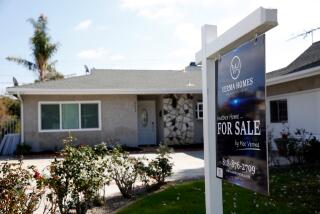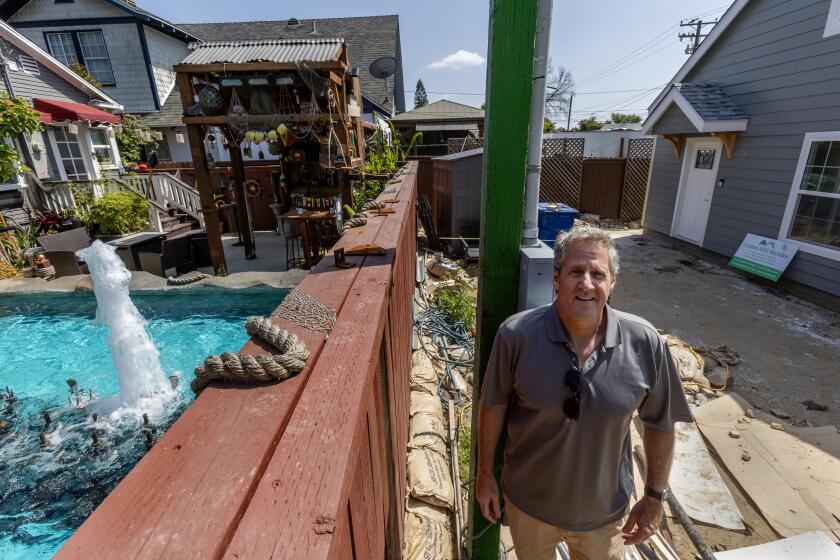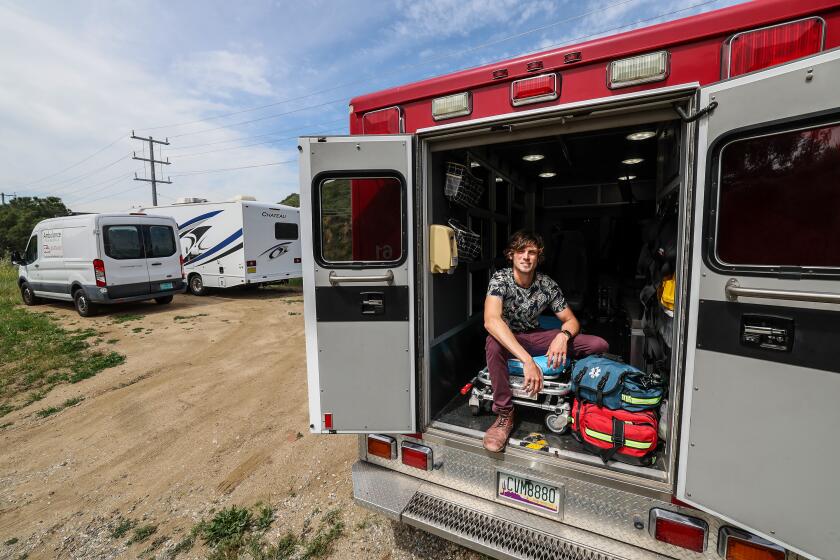Is the starter home a thing of the past? In L.A., it all depends on location
The starter home has long served as the steppingstone into homeownership.
But lately it’s become difficult to tell first-timers from repeat home buyers, according to Zillow.
Both groups have similar preferences when it comes to square footage (2,000) and bedroom count (3), the real estate firm has found. So does the starter home still exist?
In Los Angeles County, what a buyer wants is largely shaped by location, according to local real estate experts. Schools and renovation projects are other common variables that factor into the decision-making for Angelenos.
Not your father’s entry level
Chris Jacobs, Keller Williams Beverly Hills: Los Angeles is such an anomaly when it comes to purchasing properties. The lifestyles vary so much in this city that one buyer’s “first home” and essentially a starter house could be a 10,000-square-foot home in Beverly Hills that was purchased for them to live in while they attend UCLA — true client story.
Plenty of my clients have price points they can’t go above because of their income and financial situations and now tend to look further east where homes are still somewhat affordable. I would say the normal entry-level price point for first-time buyers is around $800,000 to $1 million in the city unless they have a trust fund or a wealthy family.
A lot of my first-time buyers that purchased between 2009 and 2011 had the luxury of sitting back and watching the equity in their homes increase significantly. Now, they are moving up into larger homes that have the pools and square footage that easily maintain their lifestyles. They benefited greatly by the housing market price spike which I believe we won’t see again unless something catastrophic happens.
Today’s first buyers are forced to pay the inflated prices that the previous first-time buyers made $500,000-plus profits on in only a matter of five years or so. So depending on finances, I think it is easy for a first-time buyer and repeat homeowner to write an offer on the same property, it just all depends on what their buying power is.
Moving on up in the valley
Jodie Francisco, Berkshire Hathaway HomeServices California Properties: The typical starter home — a two-bedroom, one-bathroom or slightly bigger — is still here in Encino and Sherman Oaks, but I’m seeing more of my first-time buyers opting for a step above. Many first-time buyers are starting with “move-up” homes, which are in the $1-million range.
A majority of first-time buyers gravitate toward move-in ready homes instead of something they’d have to put work into. Most understand that if they find something that needs some work, they’ll get it for less money. But it’s overwhelming for a first-time buyer to walk into a property and have to visualize redoing the kitchen, bathrooms, etc.
A repeat buyer is more open to finding a home that they can put their personal stamp on. They aren’t afraid of doing a little work.
Geography makes every bit of difference. I sold a condo a few years ago to a first-time buyer who wanted to stay on the Westside. We were able to get him into a condo in Brentwood for under $1 million. For some, a townhome or condo is less expensive and gets them into a neighborhood and gets them building equity.
An eastward migration
Debbie Weiss, Keller Williams Santa Monica: I work with a lot of first-time buyers, and in my world, the starter home still exists, but it has just been pushed east of Culver City or has turned into a condo.
The majority of the first-time home buyers I work with either don’t have children or have babies, so worrying about school districts is not high on their radar. Those I direct a bit further east. I am a big fan of Mid City, where most of my buyers can more comfortably afford their first home, and surrounding neighborhoods such as Picfair Village, Faircrest Heights and West Adams. Culver City is typically desirable to repeat buyers.
What’s fantastic about these areas is that they are quickly transforming due to astronomical Westside prices, the incoming metro and the anticipation of all the tech jobs that will be coming to the area. The game plan for a lot of my clients is to live there three to five years and then to trade up in Culver City or Mar Vista. Buyers that I work with that want to buy in Culver City and other Westside areas are typically transplants from other areas for tech or entertainment jobs and this is not their first home.
Most buyers do want the same thing whether they are first-time buyers or repeat. I always hear the same thing: three bedrooms plus two bathrooms at the minimum. It’s what most buyers want, and if there is a guest house as part of the package and it’s affordable — bonus.

Lending blues
Jason Insalaco, Coldwell Banker Residential Brokerage: The desire for the starter home is not only alive but growing. The one thing holding first-time (and repeat) buyers back is the strict lending. Many east San Fernando Valley residents — Burbank, Glendale and Valley Village — in the market to buy real estate have suitable incomes, but their livelihood is derived from self-employment and independent contract work.
Lenders can make it extremely difficult for borrowers to qualify for enough loan with non-salaried revenue even with otherwise decent gross annual income. I have had self-employed clients take a W-2 salaried job, below their pay grade and outside their employment field, in order to qualify for the loan. Mere minutes after the deed recorded, one client gave their two-week notice to their employer so they could resume a full-time tech consultancy business.
With the qualifying challenges for self-employed borrowers, many repeat purchasers cannot qualify to purchase more home even if they have a sizable down payment for a larger property. Often, these buyers bought their first homes before they became self-employed and now cannot qualify for what would have traditionally been the bigger second house. Thus, you have first-time and second-time buyers waiting longer to purchase in order to save a much larger down payment.
Some repeat buyers prioritize good school districts for their second purchase but soon discover that they won’t be able to necessarily gain more square footage with their second home. Strong school districts create premium pricing per square foot. So while a repeat buyer may trade up to a platinum school district, they may be living in the same or even less square footage.
A winning, yet expensive, ticket
Cari Corbalis, RE/Max Estate Properties: In the South Bay, there are fewer first-time buyers than many other areas simply because the entry-level price of homeownership is quite high.
At the lower end of our market, you may be able to buy a condo or townhouse around $800,000 in North Redondo or a single-family home in central Torrance. With a 20% down payment, you would still need a yearly income of approximately $160,000. For many, coming up with the down payment can be more challenging than handling the monthly payment. Often our buyers have been given money from parents for this.
Another hurdle for a first-time buyer is the sticker shock of what they can get for this amount. With substantial job incomes, they expect to start with a three-bedroom, two-bath home in excellent condition. They frequently end up settling for a two-bedroom property that requires a small amount of TLC.
A second-time buyer will be able to use equity from the sale of their home to leverage into a larger, higher-priced property, which we often see around the $1.2-million mark. We do see first-time buyers sometimes slip into that price range, but again, it’s usually with a large down payment from family along with high dual incomes.
I think the largest crossover for a first-time buyer and a repeat buyer is location — closer to the beach always seems to be a winning ticket.
neal.leitereg@latimes.com | Twitter: @LATHotProperty







